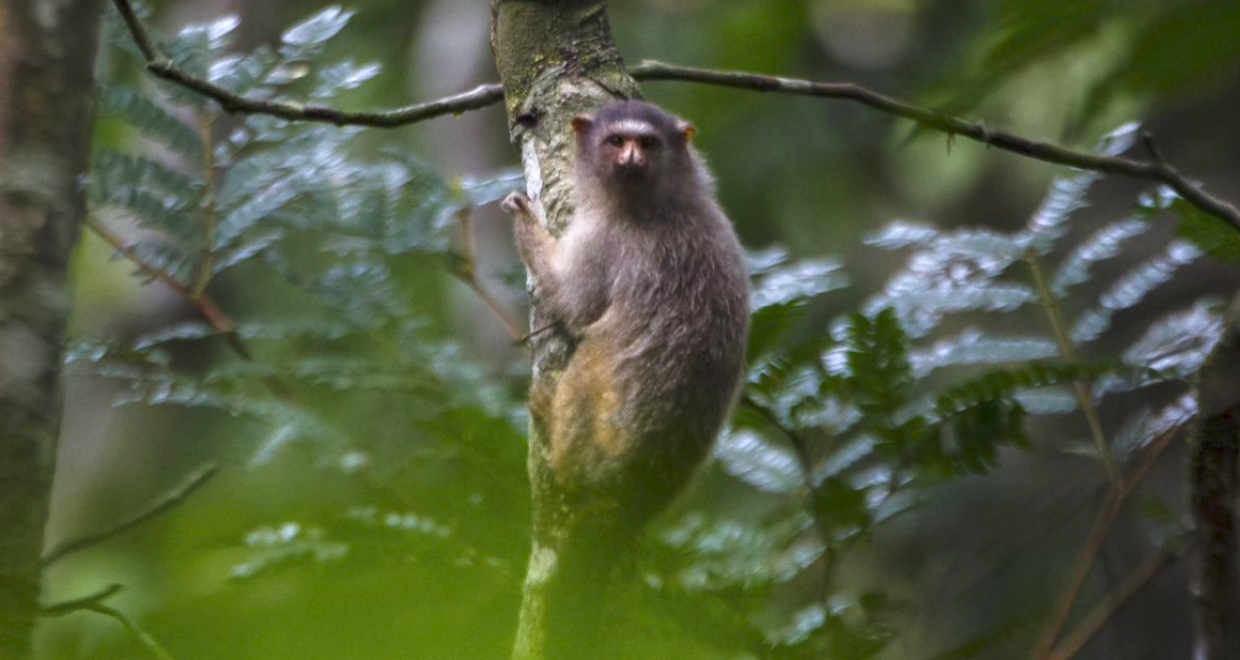Lack of information as a threat for Amazonian marmosets
In 1914 a scientific expedition led by the former U.S. President Theodore Roosevelt and the Brazilian Marshal Cândido Rondon set out into the Amazon rainforest to map the then unknown River of Doubt, known today as the Roosevelt River. One of the main aims of this expedition was to create an inventory of the region’s biodiversity. To this end the members of the expedition collected many animal specimens and sent them to the American Museum of Natural History and the National Museum of Rio de Janeiro. Among these were three skins and skulls of an unknown marmoset species, which had been collected at the confluence of the Roosevelt and Aripuanã rivers.

In 1993 these specimens were used to describe a new species, Mico marcai. However, the only available information about this marmoset was that recorded on the label of the specimens collected almost a century earlier, and many questions remained unanswered. Could the species still be found? What is its geographical range? What is the population and conservation status of this apparently elusive marmoset?

These questions motivated a team of young researchers from the Mamirauá Institute for Sustainable Development to seek support for a project to assess the conservation status of M. marcai. The species was considered Data Deficient on the national and global Red Lists, so the team used data from their field surveys to delimit its geographical range, estimate its population, and identify the main threats to its long-term survival. The researchers used spatial modelling to predict the effects of land-use changes on the species’ habitat, which lies in a region with a high rate of deforestation—the so-called Arc of Deforestation.

Their findings show that, despite the relative abundance of M. marcai, habitat loss is likely to reduce its population by over 30% in less than 2 decades. Because of the likely decline of the species’ extent of occurrence—one of the IUCN criteria for categorization as a threatened species—M. marcai should be categorized as Vulnerable to extinction.
Unfortunately Brazil is now facing a dire scenario for environmental policies and conservation. After successive funding cuts for science and environment by the outgoing government, the proposals for development and economic growth put forward by the President elect will further weaken environmental policy in Brazil. Proposals include merging the Environmental and Agriculture Ministries—the latter being under the political power of the agribusiness lobby—and weakening legislation regarding the licensing and regulation of projects, with far-reaching environmental impacts. The proposed changes will also make it more difficult to conduct scientific studies of the environmental impact of development activities, and weaken the ability to develop measures to mitigate their deleterious effects. These political developments will facilitate the opening of the Amazon rainforest to economic exploitation, with immense social and environmental impacts.

Categorization of a species as Data Deficient does not indicate the absence of threats but rather highlights the importance of further research. Mico marcai had been neglected by the scientific community for decades, and is now recognized as yet another threatened species. Although our findings have provided valuable information on this species, it is unclear how many more primate species in the Amazon rainforest are facing serious threats. Basic information on occurrence and distribution is needed for most primate species in this region, and the approach used in this study could support the assessment of their conservation status and the implementation of strategies for their long-term protection. However, the development policies now being planned in Brazil are not only campaign rhetoric but a real threat to the biodiversity of the Amazon region.
The article ‘The Roosevelt–Rondon expedition marmoset Mico marcai: unveiling the conservation status of a data deficient species’, published in Oryx—The International Journal of Conservation, is now freely available until December 14.
The study was supported by the Conservation Leadership Programme, Gordon and Betty Moore Foundation, Grant Agreement for Mamirauá Institute (#5344), Conservation International, Primate Conservation Inc., International Primatological Society, Idea Wild and by the National Research Council of Brazil (CNPq 200502/2015-8).
All photographs © Marcelo Santana






